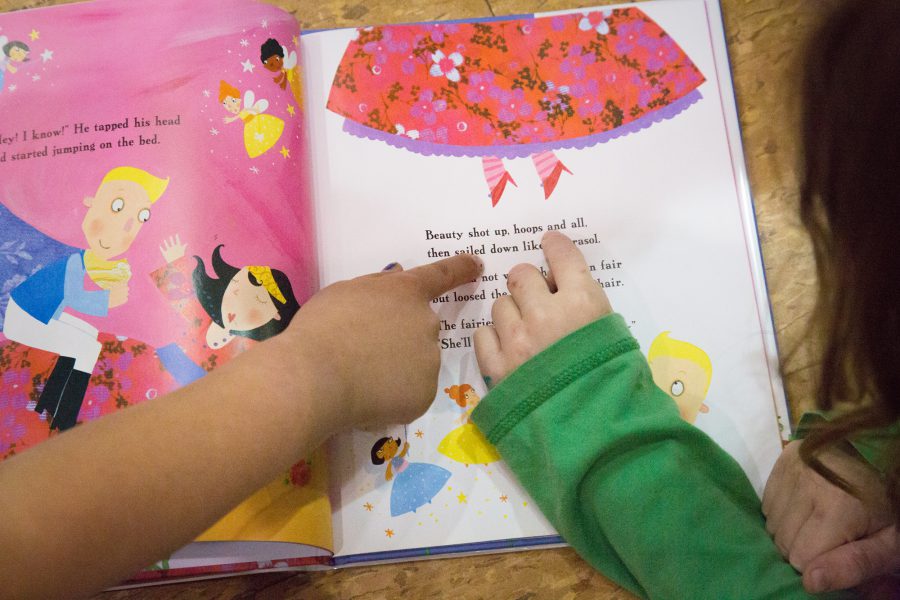
The most fundamental definition of reading is being able to interpret written symbols and understand printed material. Like walking and talking, learning to read does not happen all at once, but happens gradually through continuous experiences with printed material and reading related activities. Parents can help their children learn to read by presenting and reinforcing these printed materials and reading related activities.
The National Reading Panel, initiated by the United States Congress and the National Institute of Child Health and Human Development, has identified five elements of reading instruction necessary for reading achievement. These elements include: phonemic awareness, phonics, vocabulary, comprehension, and fluency. A basic understanding of the elements may help as you begin to work with your child.
Phonemic awareness involves the ability to recognize that a spoken word consists of a sequence of individual sounds. Children need to learn some basics about language, such as an understanding that words are composed of sounds, before being able to start with reading printed letters and putting those printed letters together to make words. Specific phonemic awareness skills consist of rhyming, oral blending, and word segmentation, as well as isolation, deletion, and substitution. Rhyming words are words that end with the same sounds. These include: bat, cat, hat, mat, and sat. Oral blending puts the sounds of letters together to create words. For example: the sounds /b/, /a/, and /t/, (say the sounds not the letter names), combine to create the word bat. Word segmentation is the opposite and breaks the sounds in words into individual sounds. For example: bat has three distinct sounds which are /b/, /a/, and /t/ (say the sounds not the letter names). Isolation involves isolating sounds of words. For example, the first sound in the word bat is the /b/ sound. Deletion entails deleting sounds in words. For example, the word bat without the beginning /b/ sound is the word at. Substitution means substituting one sound for another sound. For example, changing the /b/ sound in the word bat to a /s/ sound creates the new word sat.
These phonemic awareness skills and additional playing with language will help prepare children for phonics. After all, readers need success with sounds before moving onto printed letters, printed words, and printed texts. Phonics involves teaching readers to read and pronounce words by using the printed letters and corresponding sounds. For example, the letter b has the /b/ sound as in the word bat, or the letters th have the /th/ sound as in the word that. Children learning to read also need to learn how to put those letters and letter sounds together to make words, in order to decode those words and read those words in print.
In the simplest of terms, vocabulary means all known words. This includes sight words or high frequency words as well as multiple other words. Some teachers and researchers relate word attack skills to vocabulary skills, that is, the skill of putting letters, prefixes and suffixes, and syllables together to make meaningful words. This is necessary in order to be able to read unlimited words. For example, that the letters c, a, and t go together to make the word cat; that un and der and stand go together to make the word understand; and that home and work go together to make the word homework. This is the piece of the reading process that many people associate with what reading is all about. However, reading is much, much more.
The major goal of reading is to take meaning from the text. Comprehension instruction and involvement includes: prereading instruction, during reading instruction, and postreading instruction. Prereading instruction includes previewing vocabulary, activating background knowledge, asking questions, creating visual images, drawing inferences, synthesizing, and clarifying. During reading instruction includes think alouds, stopping and making or changing predictions, tweaking or refining mental pictures, identifying confusions, and making connections. These connections may be: text-to-self connections, text-to-world connections, or text-to-text connections. Postreading instruction includes responding, asking questions, summarizing, retellings, and creating notes.
Reading fluency is the ability to decode individual words accurately and automatically. Fluent readers, appropriately paced readers, and even faster readers to a point, tend to have better overall comprehension and tend to become the better readers. These readers have an extensive overall vocabulary, and therefore expend little energy on word attack skills and more energy on reading for meaning. In addition, these readers see phrases, sentences, and paragraphs as complete units with meaning.
How to address these five elements of reading instruction? While it may be best to leave the direct teaching of reading skills to teachers at school, there may be many pieces of the reading puzzle parents can present at home. Take a look at future CliF blog posts for more specifics. These will become some of the best activities to present at home. Show some enthusiasm when you follow through, and you will see that enthusiasm spread to your child.
Phonemic Awareness
Phonemic awareness is the ability to hear, identify, and manipulate the individual sounds, or phonemes, in spoken words.
Phonics
Phonics is the concept that there is a predictable relationship between phonemes—the sounds of the spoken language—and graphemes—the written letters and spellings that represent those sounds.
Vocabulary
The words readers read and know. The larger the reader’s vocabulary, the easier it is to make sense of the text.
Comprehension
Comprehension is the reason for reading. It is basically an understanding of what is being read.
Fluency
The ability to recognize words easily, read with greater speed, accuracy, and expression, and better understand what is read.
Source
Bruce Johnson is an educator, reading specialist at the Merrimack Valley School District in New Hampshire, member of CLiF’s Advisory Board, and author of Helping Your Child Become a Successful Reader: A Guide for Parents. Learn more at www.guidesforparents.wordpress.com.



